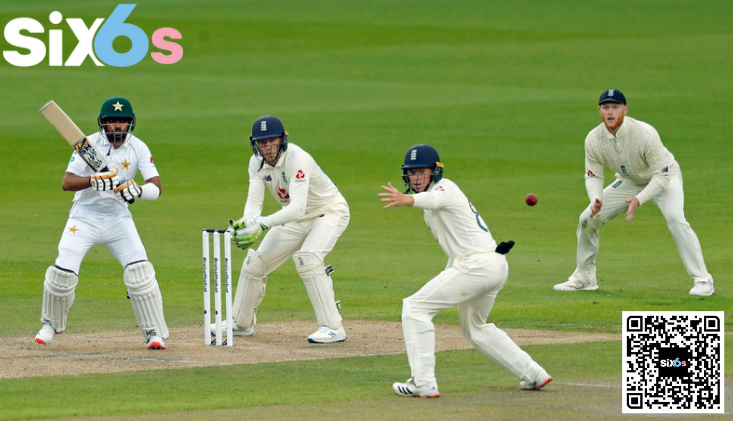Learn all about Test Cricket, the oldest and most traditional format of the game. Discover the rules, strategies, and history behind this iconic sport. Dive into the world of Test Cricket and uncover its enduring legacy.

Cricket, often referred to as the “gentleman’s game,” has a rich history that spans centuries. Among its various formats, Test Cricket stands out as the most traditional and enduring. In this article, we will delve into the world of Test Cricket, exploring its origins, rules, strategies, and significance in the cricketing universe.
Introduction to Test Cricket
Test Cricket, simply known as “Tests,” is the longest and oldest format of the game. It represents the pinnacle of cricketing skill and endurance, with matches lasting up to five days. Unlike the more modern and faster-paced One Day Internationals (ODIs) and Twenty20 (T20) matches, Test Cricket is a true test of a player’s stamina, technique, and mental fortitude.
Origins of Test Cricket
Test Cricket traces its roots back to the 19th century when England and Australia locked horns in the first-ever Test match in 1877. The venue was the Melbourne Cricket Ground, and this historic encounter laid the foundation for the longest format of the game. Since then, Test Cricket has evolved, with numerous countries participating and contributing to its legacy.
Test Cricket Format
Teams
In a Test Cricket match, two national teams face off against each other. Each team comprises eleven players, and the squads are selected based on the players’ skill, form, and fitness.
Duration
A Test match is played over a maximum of five days, with each day consisting of three sessions. The game can also end earlier if one team manages to win before the scheduled five days are completed.
Overs
Unlike limited-overs formats where a set number of deliveries (usually 50 or 20 overs per side) are bowled, Test Cricket has no such restrictions. Bowlers can bowl an unlimited number of overs, allowing for a more strategic and tactical approach to the game.
Innings
Each team gets two innings to bat and bowl. An innings is completed when ten of the eleven batsmen are dismissed, or the team captain decides to declare the innings closed. If a team doesn’t get all out in the allocated time, the innings ends when the set number of overs is bowled.
Scoring in Test Cricket
Scoring in Test Cricket is based on runs, much like other formats of the game. Batsmen aim to score as many runs as possible by hitting the ball and running between the wickets. The team that scores the most runs across both innings wins the match.
Wickets
In Test Cricket, getting batsmen out is crucial. There are several ways to dismiss a batsman, with the most common being bowled, caught, leg before wicket (LBW), and run-out. Bowlers employ various techniques and strategies to outfox batsmen and take wickets.
Fielding
Fielding plays a crucial role in Test Cricket. Teams strive to take catches, effect run-outs, and prevent boundaries to build pressure on the opposition. A strong fielding side can turn the tide of a match in their favor.
Strategies in Test Cricket
Batting
Batting in Test Cricket demands immense patience and technique. Batsmen need to defend diligently, leave deliveries outside the off-stump, and capitalize on scoring opportunities. Building partnerships and rotating the strike are also vital aspects of batting in Tests.
Bowling
Bowlers have the task of consistently hitting good areas, maintaining a probing line and length, and exploiting any weaknesses in the opposition’s batting lineup. Swing, seam movement, and spin are essential tools in a bowler’s arsenal.
Captaincy
The role of the captain is pivotal in Test Cricket. Captains make strategic decisions such as field placements, bowling changes, and declarations that can influence the outcome of the match.
Significance of Test Cricket
Test Cricket holds a unique place in the hearts of cricket enthusiasts and players alike. It is a format that separates the men from the boys, testing not only physical skills but also mental strength. Here are some reasonas why Test Cricket is so significant:
Tradition and History
Test Cricket is steeped in tradition and history. The Ashes series between England and Australia, the Border-Gavaskar Trophy between India and Australia, and other iconic contests have added to the lore of the game.
Skill Development
Test Cricket challenges players to develop their skills to the fullest. Batsmen learn to graft for runs, bowlers discover new ways to take wickets, and fielders become agile and efficient.
Character Building
The mental aspect of Test Cricket is unparalleled. Players face adversity, deal with pressure, and learn to stay focused for extended periods. It builds character and resilience.
Ultimate Test
For players, representing their nation in Test Cricket is the ultimate honor. It is a testament to their dedication and prowess in the sport.
Conclusion
In conclusion, Test Cricket is not just a format of the game; it’s a celebration of cricket’s rich heritage and the epitome of sportsmanship. With its storied history, unique challenges, and timeless appeal, Test Cricket continues to capture the imagination of cricket enthusiasts worldwide. Whether you’re a seasoned fan or a newcomer to the game, Test Cricket offers a profound and enduring cricketing experience that is truly unparalleled. So, the next time you witness a Test match, remember that you’re partaking in a tradition that has withstood the test of time and will continue to do so for generations to come.
